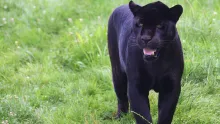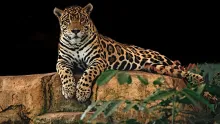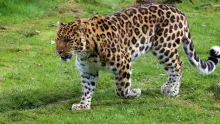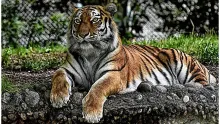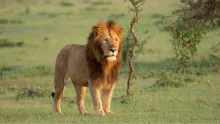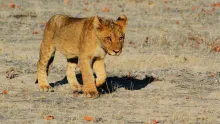Skip to main content
Introduction
- A Black Panther is not a separate species but a melanistic variant of big cats, primarily leopards (Panthera pardus) and jaguars (Panthera onca).
- Melanism is a genetic mutation that results in an excess of dark pigmentation, giving the animal a black coat.
- Black panthers are known for their mysterious and elusive nature, often associated with strength and stealth.
Physical Characteristics
- Black panthers have a
Introduction
- Jaguars are the largest big cats in the Americas and are scientifically known as Panthera onca.
- They are known for their powerful build, strong jaws, and distinctive rosette-patterned fur.
- Jaguars are apex predators, playing a crucial role in maintaining the balance of their ecosystems.
Physical Characteristics
- Jaguars have a stocky and muscular body, with males weighing between 120 to 250 pounds (54 to 113
Introduction
- Leopards are large, powerful big cats scientifically known as Panthera pardus.
- They are known for their rosette-patterned fur, which provides excellent camouflage in their habitats.
- Leopards are highly adaptable and can thrive in a variety of environments, from forests to deserts.
Physical Characteristics
- Leopards have a muscular and agile body, with males weighing between 80 to 200 pounds (36 to 90 kg) and females
Introduction
- Cheetahs are the fastest land animals, capable of reaching speeds up to 70 mph (113 km/h).
- They belong to the Felidae family and are scientifically called Acinonyx jubatus.
- Cheetahs are known for their slender bodies, spotted coats, and distinctive black "tear marks" on their faces.
Physical Characteristics
- Cheetahs have a lightweight and aerodynamic body, designed for speed.
- They weigh bet
Introduction
- Tigers are the largest of all big cat species and are scientifically called Panthera tigris.
- They are known for their striped fur, which is unique to each individual, much like human fingerprints.
- Tigers are apex predators, meaning they are at the top of the food chain in their ecosystems.
Physical Characteristics
- Tigers are powerful and muscular, with males weighing up to 660 pounds (300 kg) and f
Introduction
- Lions are known as the "King of the Jungle" due to their dominance and strength.
- They belong to the Felidae family and are scientifically called Panthera leo.
- Lions are the second-largest big cat species after tigers.
Social Structure
- They are social animals and live in groups called prides.
- A pride typically consists of 5 to 30 lions, including females, cubs, and a few mal
